HANWORTH AIR PARK’S GOLDEN AGE
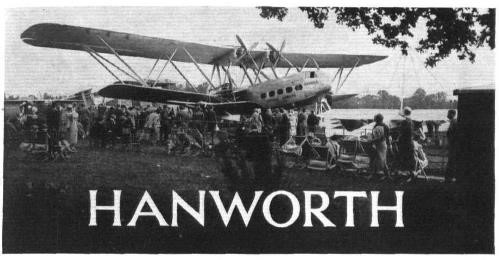
HANWORTH AIR PARK’S GOLDEN AGE 1929 – 1939
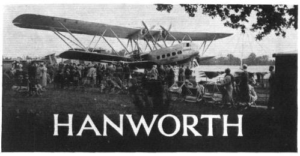
Featured image and above ‘Hannibal’, “The Winged Cunarder”, at Hanworth during a visit by members of Parliament.
Anne Logie writes:
FLIGHT magazine June 12 1931 Image courtesy FlightGlobal: part of RBI, reedbusiness.com.
HANWORTH AIR PARK’S GOLDEN AGE 1929 – 1939
The London Air Park was opened at Hanworth in 1929 as part of a government backed scheme for a nationwide network of local aerodromes. It became home to a flying club which embodied the glamorous side of flying, with many celebrity visitors, flying races and displays, as well as demonstrations of new types of aircraft. Events were frequently covered by the press and by Pathé News. By 1937 the emphasis shifted to war preparation and pilot training. During this decade a number of manufacturing and design companies made use of the former Whitehead Aircraft factory site, including Union Construction Company tram builders, Aston Martin, Cierva Autogyro Com-pany, British Klemm Aeroplane Company, and General Aircraft Ltd (GAL).
1929 – Mary Russell, “the Flying Duchess”, opens the London Air Park. Hanworth Park House becomes base of a flying club famous for its visitors, parties, and flying shows.
1930 – Winifred Brown wins the cross country King’s Cup Race, the first woman to do so. Air taxi service commences.
1931 – Visits by the aviators C W A Scott and Bert Hinkler, the ‘Graf Zeppelin’ airship, and ‘Hannibal’, the world’s biggest airliner, popularly known as “the Winged Cunarder”. The Cierva autogyro is demonstrated to members of the Japanese royal family (see autogyro picture and information below).
1932 – Amelia Earhart visits after her solo crossing of the Atlantic. ‘Heracles’ airliner gets stuck in the Longford River. Cierva Autogyro company moves production to Hanworth.
1934 – Pathé News films a ‘Miss Mayne’ demonstrating the safety of autogyros and their suitability to be piloted by women.
1936 – The clubhouse is converted to a hotel. Visits by Charles Lindberg, by ‘Bird Man’ Clem Sohn, and by Amy Johnson, who christens the first British purpose built air ambulance ‘Florence Nightingale’.
1937 – S W Sparkes, a competitor in the Isle of Man Race, hits the roof of a house in Hounslow Road. Sparkes and his passenger, C W Fry, and Mrs Abbey, the occupant of the house, are killed. Elementary and Reserve Flying Training School is set up by the UK Govern-ment, training provided at Hanworth.
1939 – The last garden party. GAL takes over most of the buildings on and around Hanworth Park.
SOME CELEBRITY VISITORS

Above: Mary Russell, Duchess of Bedford (“the Flying Duchess”)
(image source unknown)
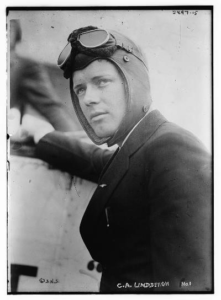
Above: Capt.Charles Lindbergh
Library of Congress, Prints & Photographs Division, reproduction number,LC-DIG-ggbain-3531

Above: Amy Johnson
public domain
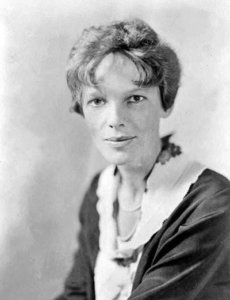
Above: Amelia Earhart
Freebase/public domain
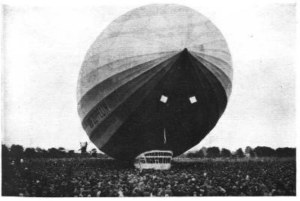
Above: The
Graf Zeppelin at Hanworth (FLIGHT Magazine August 28, 1931 Image courtesy FlightGlobal: part of RBI, reedbusiness.com.)
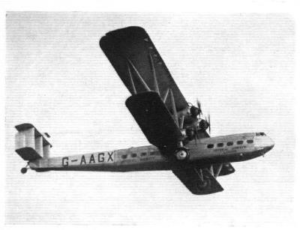
Above: The Handley Page “Hannibal” leaving Hanworth for Croydon
(FLIGHT magazine June 12, 1931 Image courtesy FlightGlobal: part of RBI, reedbusiness.com.)
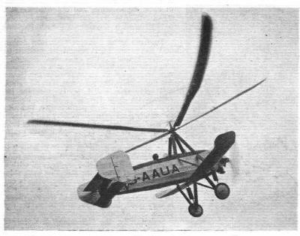
Cierva Autogiro C.19 Mark III Light Aeroplane
(FLIGHT Magazine November 21, 1930 Image courtesy FlightGlobal: part of RBI, reedbusiness.com.)
Notes on the Autogyro. Although the autogyro bears a superficial resemblance to a helicopter its flight works on a different principle. Whereas a helicopter flies under rotor blades which are directly motor driven, the autogyro moves forward like a plane, using an engine driven propellor. The rotor blades above the autogyro rotate freely, and as the craft moves forward the air moving through them makes them spin, which creates lift. While this design means that the autogyro cannot achieve the vertical take-off and landing of a helicopter, the autogyro design is safe because it cannot stall, and the craft may be flown at slow speeds.
Autogyro at Hanworth 1933
Miss Mayne and Autogyro at Hanworth 1934
How the Autogiro works 1931
______________________________
Article by Anne Logie
My principal sources for this article were “Coming In To Land: A History of Hounslow, Hanworth and Heston Aerodromes 1911-1946” by Tim Sherwood (1999), Wikipedia, and the ever fascinating archives of FLIGHT magazine (FlightGlobal: part of RBI, reedbusiness.com), to whom we are grateful for permission to reproduce the images credited to them above.
I would like to thank the staff and volunteers of the Brooklands Museum Library for their help with my research. They have a wealth of material, going into much greater detail than could be covered by this article.
Text and images copyright Habitats & Heritage unless otherwise stated. No re-use without express consent.